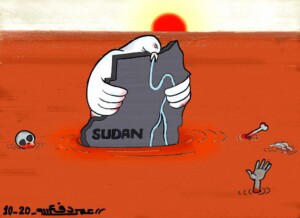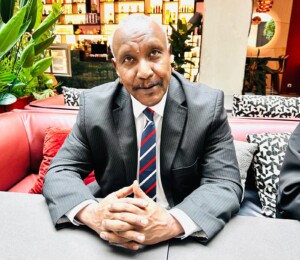Focus on “most vulnerable” in Sudan’s Humanitarian Response Plan
The new Humanitarian Response Plan in Sudan was launched on Tuesday. The United Nations made an appeal for $952 million for the plan, which has a larger focus on the most vulnerable people than last year’s plan.
The new Humanitarian Response Plan in Sudan was launched on Tuesday. The United Nations made an appeal for $952 million for the plan, which has a larger focus on the most vulnerable people than last year's plan.
Naeema El Gassir, the UN Resident and Humanitarian Coordinator a.i., and Sudan's Humanitarian Aid Commissioner Ahmed Mohamed Adam attended the launch event together with UN agencies and journalists in Khartoum's Friendship Hall on Tuesday.
The Humanitarian Response Plan is a tool for the UN and humanitarian partners used to map where humanitarian projects can best respond to people's priority needs in the country, and to allocate funding accordingly.
The new plan appeals for $952 million to address the humanitarian needs of up to 4.6 million people, $581 million for displaced people, and $225 million for refugees, and $146 million for vulnerable residents.
Gassir said that the 2016 plan has significant changes from the programmes of 2015, being the provision of humanitarian aid in a more sustainable way and reduction of vulnerabilities in projects.
More importantly the new Humanitarian Response Plan tries to focus humanitarian assistance on the most vulnerable people only while targeting 4.6 million people in Sudan, in contrast to the previous plan that targeted 5.4 million people.
“This does not mean that needs have decreased but we have made a concerted and joint effort to target aid to the most vulnerable first,” the UN Resident said.
Malnutrition
A third important feature of this Plan, she said, is that it recognises the diversity of humanitarian needs, and thus the diversity of root causes and that they have to be responded to in different ways.
Acute malnutrition among children in Sudan is another priority that the UN would like to see budget allocated to. Other priorities are food insecurity and health insecurity, which are “exacerbated by adverse climatic phenomena such as El Niño ”, according to Gassir.
An other priority need in the 2016 Humanitarian Response Plan are the continuous refugee movements into Sudan, mainly South Sudanese. Gassir said that both the international community as the Sudanese government generously spend resources on welcoming and assisting these refugees.
“Let me also stress that in 2016 and beyond the humanitarian community is looking forward to see a boost in development aid to Sudan so as to address the root causes of humanitarian vulnerabilities, and not just the symptoms,” Gassir concluded. She said that Qatar and other development donors have been supporting critically important development initiatives in Sudanese areas.
Funding gap
Last year there was a huge funding gap for the Humanitarian Response Plan, that aimed to provide assistance to 5.4 million people. As of 24 August, the total amount received by donors for the Plan 2015 was $400.8, OCHA reported, pointing to a funding gap of 61 percent. Humanitarian organisations were seeking more than $1 billion that year to fund projects.
In her remarks Gassir said that last year, 3.3 million Sudanese people were assisted, including 1.8 million displaced. Organisations provided clean drinking water and latrines, and others set-up measles vaccination campaigns.











 and then
and then